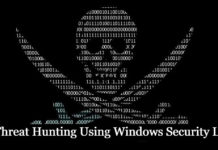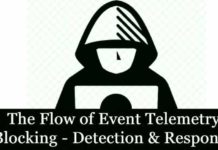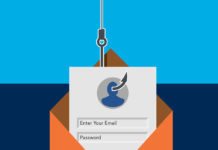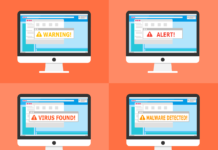Remote and hybrid teams no longer follow a uniform schedule. Some individuals perform at their peak in the early morning, while others thrive in the evening. Without insight into these differences, workflow inefficiencies, missed deadlines, and disengagement become common.
How can you create a work environment that adapts to different productivity patterns while maintaining alignment?
This article explores modern strategies for analyzing diverse work habits and tailoring team operations for optimal performance. Tools like the pc system monitoring software provide the real-time insights needed to track, assess, and refine work habits effectively.
Why Workflows Easily Break Down in Remote Teams
Without a clear understanding of how employees work, productivity suffers. Teams struggle to keep projects on track, and work-life balance becomes difficult to manage.
Some of the most pressing productivity blockers include:
- Unaligned Work Schedules: Teams operating in different time zones or following unique productivity cycles often face delays. Without structured asynchronous workflows, collaboration becomes inefficient, and response times slow down.
- Lack of Workflow Structure: Employees who need deep focus time may be constantly interrupted, while others who work best in short bursts may struggle with rigid schedules.
- Communication Overload: Too many meetings or excessive messaging disrupt focus. Without structured communication habits, teams lose valuable time switching between tasks.
- Imbalanced Workloads: High performers often take on more work, leading to burnout, while others struggle with unclear priorities or insufficient engagement.
Maximizing Efficiency by Understanding Work Habits
Improving team performance starts with understanding how each individual works best and making operational adjustments accordingly. The goal is to build an environment where employees can leverage their strengths and work habits while staying aligned with team goals.
Optimizing team performance starts with analyzing work habits and making strategic adjustments:
Identify Peak Productivity Hours
Recent studies reveal that 52% of workers reach their highest productivity between 8 and 11 a.m., while only 15% do so after 2 p.m. However, individual peak times vary and are influenced by personal energy cycles and chronotypes.
To harness these insights, have your remote team members monitor their energy levels and focus periods over several weeks, noting when they feel most alert and engaged. This self-assessment helps tailor work schedules to align tasks with natural productivity peaks.
For instance, schedule demanding tasks during high-energy periods and routine activities during lulls. To prevent disruptions, avoid planning meetings when employees are likely to be in deep focus.
Implementing a monitoring tool can facilitate this process by providing data on work patterns. This allows for informed adjustments to workflows and schedules, ultimately improving efficiency and job satisfaction.
Adapt Workflows to Work Styles
Understanding that various assignments demand distinct mental efforts is key to refining team efficiency. Allocating tasks in alignment with individual working tendencies allows for smoother execution and greater fulfillment.
For example, individuals who flourish when concentrating on in-depth, extended projects should focus on analytical tasks, where they can meticulously assess information and craft detailed solutions.
On the other hand, those who excel in high-energy, rapid-response settings are best suited for immediate troubleshooting or engaging with clients, where quick adaptability is vital. Structuring responsibilities around these strengths helps establish a well-balanced and enthusiastic workforce.
A tracking tool can support this effort by uncovering behavioral work patterns, allowing leaders to make strategic decisions that position employees where they can be the most effective.
Balance Synchronous & Asynchronous Work
Excessive real-time meetings fragment focus and lead to decision fatigue, while asynchronous collaboration allows for deeper thinking but can slow momentum when used improperly.
Instead of defaulting to live discussions, establish a communication hierarchy that clarifies when instant responses are required and when thoughtful, delayed input is more effective. Complex problem-solving and brainstorming thrive in live settings, but routine updates, project tracking, and feedback loops work best in recorded formats or written documentation.
Recent trends show that companies integrating intentional asynchronous workflows reduce unnecessary meetings and increase output quality.
Monitoring software helps track communication bottlenecks, highlighting when real-time collaboration improves efficiency and when excessive messaging disrupts productive work cycles.
Ensure Workload Distribution is Fair
Using data-driven insights instead of assumptions leads to smarter task distribution and helps prevent burnout. Regular evaluations should go beyond tracking deadlines and focus on whether workloads align with individual strengths and productivity patterns.
Identify employees who take on a disproportionate amount of work and ensure those with excess capacity are engaged with meaningful tasks. Encourage your remote team members to self-report workload intensity, providing transparency into stress levels and task distribution.
When assigning new responsibilities, consider historical performance trends to avoid overloading employees who already work at capacity. Set workload thresholds that indicate when task reallocation is necessary.
A monitoring tool simplifies this by offering real-time visibility into workloads, flagging imbalances before they impact performance. This data-driven approach ensures sustainable productivity, prevents disengagement, and creates a more balanced, resilient workforce.
Use Smart Tools to Refine Workflows & Routines
Tracking work habits manually is inefficient. A monitoring tool provides real-time insights to assess performance trends, optimize schedules, and streamline workflows.
Key benefits include:
- Identifying Productivity Patterns: Captures when your employees are most active, helping teams align high-focus tasks with natural work cycles.
- Tracking Task Progress: Analyzes time spent on projects, ensuring deadlines remain on track.
- Providing Data-Driven Adjustments: Helps refine schedules, reduce distractions, and optimize communication workflows.
- Ensuring Fair Workload Distribution: Prevents burnout by tracking task allocation and helping balance responsibilities across the team.
Conclusion
Aligning schedules with productivity peaks, structuring workflows based on strengths, and refining communication strategies help you build a high-performing, engaged team. With a monitoring tool, these insights become actionable, allowing you to effectively adapt, refine, and optimize work habits.
Investing in work habit analysis enables you to create a more efficient, motivated, and resilient remote team that thrives in today’s dynamic work environment.



































